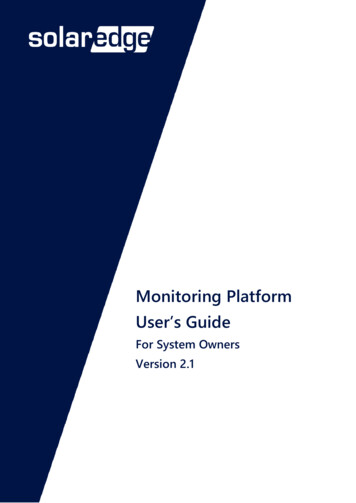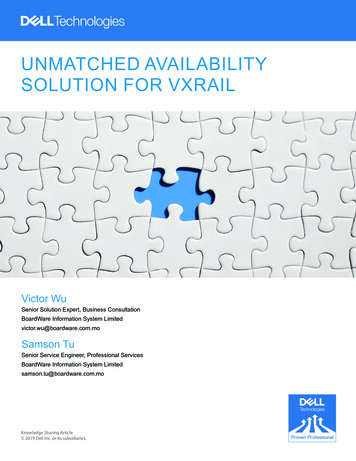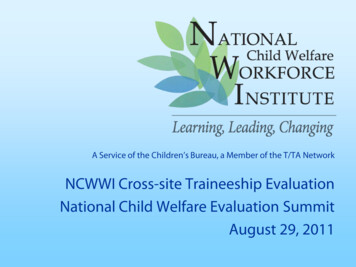
Transcription
A Service of the Children’s Bureau, a Member of the T/TA NetworkNCWWI Cross-site Traineeship EvaluationNational Child Welfare Evaluation SummitAugust 29, 2011
orkforceCross-site
Purpose: To build leadership capacity for sustainable systemschangewww.ncwwi.orgA Service of the Children’s Bureau, a Member of the T/TA Network
NCWWI Institute Outcomes: Expert consultation to build the capacity of thenational child welfare workforce Coordinated and accessible training resources formid-managers and supervisors Increased knowledge and skills re: leadership,workforce development National discourse on CW leadership and workforceissues Utilization of effective and promising leadership,systems change and workforce practiceswww.ncwwi.orgA Service of the Children’s Bureau, a Member of the T/TA Network
Traineeship Outcomes: Improved knowledge and skills of BSW and MSWstipend students Improved CW instruction and supports Local CW issues addressed through education,training and university/agency partnerships Increased diversity of stipend student completingtraineeships and sustaining CW workforce Improved CW organizational climate Increased retention of skilled CW staffwww.ncwwi.orgA Service of the Children’s Bureau, a Member of the T/TA Network
NCWWI Traineeship Team: NCWWI PI: Mary McCarthy & Katharine BriarLawson, University of Albany NCWWI director, Nancy Dickinson, University ofMaryland at Baltimore Traineeship project led by Gary Anderson &Gretchen Archer at Michigan State University Peer network led by Virginia Strand at FordhamUniversity Evaluation led by Robin Leake & Cathy Potter,University of Denverwww.ncwwi.orgA Service of the Children’s Bureau, a Member of the T/TA Network
12 MSW & BSW NCWWITraineeship Partners––––––––––––Briar Cliff UniversityCase Western ReserveClark AtlantaUniversity of Illinois at ChicagoUniversity of MarylandUniversity of MontanaNortheastern State UniversityNew Mexico State UniversityUniversity of South DakotaPortland State UniversitySalem State UniversityYeshiva Universitywww.ncwwi.orgA Service of the Children’s Bureau, a Member of the T/TA Network
5 MSW & BSWComprehensive WorkforceProject Partners CWP traineeships included in the cross-siteevaluation Schools Include–––––University of DenverUniversity of KansasUniversity of LouisianaUniversity of North CarolinaUniversity of Albanywww.ncwwi.orgA Service of the Children’s Bureau, a Member of the T/TA Network
Traineeship ProgramsNCWWIComprehensive WorkforceProjectswww.ncwwi.orgA Service of the Children’s Bureau, a Member of the T/TA Network
Questions to Think About What evaluation questions would beimportant for a project of this scale/scope? What strategies would you use to answer theevaluation questions? What questions would you ask students? What questions would you ask faculty, field,or agency supervisors?www.ncwwi.orgA Service of the Children’s Bureau, a Member of the T/TA Network
Student Enrollment forNCWWI Traineeships2010-2011 Academic Year 116 stipend students the 12 NCWWI traineeshipprograms this year, 35 graduates 61% (71) are pursuing MSW degrees and 39%(45) are pursuing BSW degrees 71% (82) started traineeships in the 2010 2011 and the remaining 29% (34) areparticipating in the 2nd year of a traineeshipexperiencewww.ncwwi.orgA Service of the Children’s Bureau, a Member of the T/TA Network
Student Enrollment for CWPTraineeships 51 stipend students the 5 CWP traineeshipprograms in 2010-2011 partnering with 18schools, 38 graduates 61% (31) pursuing MSW degrees and 39% (20)pursuing BSW degrees 73% (37) started traineeships in the 2010 2011 and the remaining 27% (14) participated inthe 2nd year of a traineeship experiencewww.ncwwi.orgA Service of the Children’s Bureau, a Member of the T/TA Network
TraineeshipEvaluation Questions1. How successfully are traineeships using recruitmentstrategies to increase the number of qualified and diverseapplicants?2. How are traineeship programs implementing innovativeeducational strategies that effectively prepare child welfareworkers?3. To what extent are local child welfare issues impacted byand impacting education, training and university – agencypartnerships?4. To what extent do traineeships prepare students with theknowledge and skills to work effectively in child welfare?www.ncwwi.orgA Service of the Children’s Bureau, a Member of the T/TA Network
Cross-Site Evaluation MixedMethods Design1. Stipend Student Inventory (web-based)– Baseline, annual and follow-up– Telephone interviews with students2. Semi-annual narrative reports3. Student tracking database Standardized Excel format database4. Telephone interviews with project PI’s5. Competency ratings by Faculty & Field Instructorswww.ncwwi.orgA Service of the Children’s Bureau, a Member of the T/TA Network
Stipend Student Inventory Cross-site work team collaboratively developed tool SSI Baseline:– Competency self-assessment, demographics, Secondarytrauma, burnoutSSI Annual:–Competency self assessment, secondary traumaticstress, burnout, program satisfaction, self-efficacySSI Follow-up:–Competency self assessment, secondary traumaticstress, burnout, job satisfaction, org culture & climate,intent to stay, historical trauma (tribes)www.ncwwi.orgA Service of the Children’s Bureau, a Member of the T/TA Network
More about the SSI 58-item competency self-assessment– Policy, CW organization, community programs,human behavior, CAN indicators, risk factors,service delivery, skills ethics and cultural issues– Reliable subscales (alphas range .81 to .94) Web-based survey delivered via Qualtrics surveythrough DU IRB approval from DU as “school of origin” andeach of the university partnerswww.ncwwi.orgA Service of the Children’s Bureau, a Member of the T/TA Network
Response Rates1. Stipend Student Inventory–68% completed Annual (2010)–95% completed Baseline (2010)–79% completed annual (2011)–58% completed follow-up (2011)–Interviews completed with 10 current students and 5graduated students2. 100% participation of programs for semiannual narrative reports, PI interviews &student databasewww.ncwwi.orgA Service of the Children’s Bureau, a Member of the T/TA Network
Results1. How successfully aretraineeships using recruitmentstrategies to increase thenumber of qualified and diverseapplicants?www.ncwwi.orgA Service of the Children’s Bureau, a Member of the T/TA Network
Qualified Diverse TraineesAs of January of 2011, 35 degrees have beenawarded for the NCWWI Traineeships 49 % 17 BSW 50 % 18 MSW 19 employed public child welfare 9 employed private child welfare 2 employed in other social work settings 5 enrolled in MSW programswww.ncwwi.orgA Service of the Children’s Bureau, a Member of the T/TA Network
Qualified Diverse TraineesAn additional 79 estimated to have completedtheir degree in May 2011 and enter theworkforce or MSW programs 47% (37) BSW degrees 53% (42) MSW degreeswww.ncwwi.orgA Service of the Children’s Bureau, a Member of the T/TA Network
Student Demographics 47% of students working full-timethroughout program (MSW students)– 69% urban; 29% rural; 2% tribal agency– 25% of these working as supervisors 67% carry caseloads– Average of 26 cases; majority felt their caseloadis “about right size”– 1-5 cases are “exceptionally challenging” addressing the needs of children and parents withextensive complex mental health needswww.ncwwi.orgA Service of the Children’s Bureau, a Member of the T/TA Network
Ethnicity of Trainees for 20092010 CohortAmerican Indian/Native AlaskanBlack/African AmericanHispanic/LatinoNative Hawaiian/Pacific 1%23%0%A Service of the Children’s Bureau, a Member of the T/TA Network
Ethnicity of Trainees for 20102011 CohortAmerican Indian/Native AlaskanBlack/African AmericanHispanic/LatinoNative Hawaiian/Pacific %56%1%A Service of the Children’s Bureau, a Member of the T/TA Network
2. How are traineeship programsimplementing innovativeeducational strategies thateffectively prepare child welfareworkers?www.ncwwi.orgA Service of the Children’s Bureau, a Member of the T/TA Network
Educational Strategies Curriculum enhancement Innovative field models Workforce collaborationswww.ncwwi.orgA Service of the Children’s Bureau, a Member of the T/TA Network
Innovation Themes LeadershipCultural and linguistic competencyWorkforce issuesTraumaSystems of carewww.ncwwi.orgA Service of the Children’s Bureau, a Member of the T/TA Network
3. To what extent are local childwelfare issues impacted by andimpacting education, training anduniversity – agency partnershipswww.ncwwi.orgA Service of the Children’s Bureau, a Member of the T/TA Network
Impacting Local Issues Cultural competencyDeveloping leadersSystems of careCompetency based practiceWorkforce strategiesLimited resourceswww.ncwwi.orgA Service of the Children’s Bureau, a Member of the T/TA Network
4. To what extent do traineeshipsprepare students with theknowledge and skills to workeffectively in child welfare?www.ncwwi.orgA Service of the Children’s Bureau, a Member of the T/TA Network
Knowledge and Skills forChild Welfare Practice– Competency self-ratings across 10 child welfare areas washigh overall– Improvements for Cohort 2 from baseline to annual at thep .005 level for almost all competencies, but differenttrends for BSW and MSW students. BSW students reported significant improvements on allsubscales except Ethics MSW students reported significant improvements onlyfor Relevant Federal Policy subscale– While current follow-up sample is small, data indicates thesame pre-post improvements trend for Cohort 1’s graduatedstudentswww.ncwwi.orgA Service of the Children’s Bureau, a Member of the T/TA Network
Knowledge and Skills forChild Welfare Practice Stipend Student Inventory, Spring 2011– MSW students who are currently working ratetheir competencies higher than those notcurrently working (p .005 for 6 of the 10competency subscales)– Returning MSW students rate their competencieshigher than those receiving a stipend for the firsttime for all competency subscales (p .005 forone subscale: Human behavior in the socialenvironment)www.ncwwi.orgA Service of the Children’s Bureau, a Member of the T/TA Network
Knowledge and Skills forChild Welfare Practice– MSW ratings were higher than those of BSWstudents at the annual assessment (spring),especially on knowledge of human behaviorsand CAN indicators (p .005 for both subscales)www.ncwwi.orgA Service of the Children’s Bureau, a Member of the T/TA Network
Students’ Ratings ofTraineeship Program High overall program satisfaction ratings forcurrent MSW and BSW students (6pt. Scale)www.ncwwi.orgA Service of the Children’s Bureau, a Member of the T/TA Network
Students’ Ratings ofTraineeship ProgramI love the program and am learning a lot aboutstrengths-based treatment. I have worked in childwelfare for many years has this program has provideda whole new outlook which I can apply to practice.The traineeship program offers access to high qualityeducation with top notch professors in the field whoare committed to helping students succeedwww.ncwwi.orgA Service of the Children’s Bureau, a Member of the T/TA Network
Students’ Ratings ofTraineeship Program High satisfaction with field placements &field instructor for BSW and MSW students–Opportunity to apply classroom learning & gaindeeper understanding of child welfare (87%)–Placement was a good fit and deepenedunderstanding of CW (82%)–52% have increased commitment to career in CWas a result of field placement and only 11% are lesslikely to consider a long-term career in CWwww.ncwwi.orgA Service of the Children’s Bureau, a Member of the T/TA Network
Field Instructor Feedback 44 instructors completed survey for 62 students High satisfaction with student preparation &performance Student strengths:– Willingness to learn, motivation andcommitment, strong written & verbal skills Student challenges– Need exposure to other units and full spectrumof CW, family engagement skills, time and stressmanagement, personal biaseswww.ncwwi.orgA Service of the Children’s Bureau, a Member of the T/TA Network
Field Instructor Feedback Suggestions for improving communicationbetween agencies and schools:– Weekly step-by-step field guide for placementsfor students, instructors & faculty– 3-way meetings with students, faculty andinstructors at least once, preferably more– Check-ins during placement instead of onlyduring the review period– Clear channel of communication about concernsthat arisewww.ncwwi.orgA Service of the Children’s Bureau, a Member of the T/TA Network
Field Instructor Ratings ofStudent Competencies Instructors highly rated students across allcompetency subscales High agreement from faculty that:– Agencies provide adequate learningopportunities and supports for students– Students are motivated and eager to learn– Students are well-suited for a career in CWIt is ALWAYS A PLEASURE to work with [school] staff You possess such adiverse faculty, all helpful, supportive and excited about working with thoseof us in the Child Welfare System. Thank you!www.ncwwi.orgA Service of the Children’s Bureau, a Member of the T/TA Network
Field Instructor Ratings ofStudent CompetenciesRelevant Federal Policy*Organization of CW ServicesOrganization of Other ProgramsSocial BehaviorCAN IndicatorsParental 5.345.015.495.575.46EthicsCultural Issues5.595.15Approaches to CW Service DeliverySkills5.485.025.145.52*Significant difference between MSW and BSW students at p .005www.ncwwi.orgA Service of the Children’s Bureau, a Member of the T/TA Network
Comparison of Student Ratings andField Instructor Ratings Computed intra-class correlation coefficients using two-waymixed model, correlating mean scores on each subscale Correlations were low for all subscales– range .048 (ethics) to .321 (skills) 20% of instructors gave the students a skills score of 6.0,meaning they expressed strong agreement with every itemon the skills subscale– If we filter out cases that have ratings on both student and instructor 6.0, the ICC increases– Cause of low correlations might be overuse of high end of scale,mostly by field instructors– Data supports the notion of widespread grade inflationwww.ncwwi.orgA Service of the Children’s Bureau, a Member of the T/TA Network
Faculty Liaison Feedback 30 faculty liaisons rated 75 students High agreement from faculty that:– Students are well prepared for CW practice intheir field placement– Students are motivated and eager to learn– Students are able to apply classroom learning tocase practice in the fieldStudent can function "outside the box". His ways of interacting with clients canbe viewed as nontraditional. MSW is allowing him to add theory to hispractice and sharpen his practice skills.www.ncwwi.orgA Service of the Children’s Bureau, a Member of the T/TA Network
Faculty Liaison Ratings ofStudent CompetenciesRelevant Federal PolicyOrganization of CW Services*Organization of Other Programs*5.375.145.235.045.605.49Social Behavior*5.605.37CAN Indicators*5.41Parental problems*5.25EthicsCultural Issues5.75MSWBSW5.725.77Approaches to CW Service icant difference between MSW and BSW students at p .005www.ncwwi.orgA Service of the Children’s Bureau, a Member of the T/TA Network
Results from Follow-up SSI Survey 32 out of 55 students who graduated in 2010completed the survey (58%)– 75% working in public, private or tribal agency– 53% working in urban agency, 28% rural– 19% sups, 59% workers; 89% carry caseswww.ncwwi.orgA Service of the Children’s Bureau, a Member of the T/TA Network
Results from Follow-up SSI Survey High Satisfaction with traineeship and current job– 77% have skills they need to their job– 70% say traineeship adequately prepared them for job– 85% would recommend traineeship program– 59% report they are satisfied with their job Strong supervisor and peer support Under-appreciated for work they do– 27% plan to leave the organization after repaymentperiod endswww.ncwwi.orgA Service of the Children’s Bureau, a Member of the T/TA Network
Results from Follow-up SSI Surveywww.ncwwi.orgA Service of the Children’s Bureau, a Member of the T/TA Network
Feedback from GraduatedStudents 5 students randomly selected to participate in interview– 3 MSW’s and 2 BSW’s MSW students working in the field need more of a tailoredapproach to better meet their needs as experiencedworkers/sups New workers need skills for coping with the trauma of thework (not taking it home at night) Students need field placements that mirror where they willbe working (student working in a rural tribal sites feltunprepared for unique challenges) Strong focus on family engagement and family strengthswww.ncwwi.orgA Service of the Children’s Bureau, a Member of the T/TA Network
Feedback from GraduatedStudents, Cont. Frustration with “top-down” decision making bymanagement, without involving workers– Disconnect from creative thinking and problem-solving approacheslearned in traineeships New workers expressed enthusiasm for job, but lesscommitment to long-term career in child welfare 4 out of 5 reported positive agency climate and jobsatisfaction, all reported strong peer support, and busy,challenging work Interviewees felt prepared for the work, and felt they had agood understanding of agency change processes andleadership skills, see themselves as change agentswww.ncwwi.orgA Service of the Children’s Bureau, a Member of the T/TA Network
Lessons Learned from theCross-site Evaluation Build strong partnerships early– Communication and buy-in– Student outreach– Customization options in design Internal Review Board Challenges– Challenges working with 20 universities– Sharing data, protecting privacy, confidentiality Stay connected with students– Multiple contacts in database– Regular follow-up during and after programwww.ncwwi.orgA Service of the Children’s Bureau, a Member of the T/TA Network
Challenges and Limitations Challenges– Obtaining IRB approval to collect or share data Evaluators can create application templates to share with traineeshipsto reduce time and maintain consistency across sites– Determining guidelines for BSW/MSW level achievement ofcompetencies, students have wide range of experience Student, field instructor, and faculty liaison ratings were used– Obtaining responses from students can be a challenge Coordinated evaluation activities with other student events Limitations– Still early in the evaluation, and some response rates (ex: AmericanIndian/Alaskan Native students) do not allow for full analysis yetwww.ncwwi.orgA Service of the Children’s Bureau, a Member of the T/TA Network
Thank Youhttp://www.ncwwi.orgA Service of the Children’s Bureau, a Member of the T/TA Network
- Portland State University - Salem State University - Yeshiva University . www.ncwwi.org. A Service of the Children's Bureau, a Me. mber of the T/TA Network . . MSW students reported significant improvements only for Relevant Federal Policy subscale - While curr ent follow -up sample is small, data indicates the .
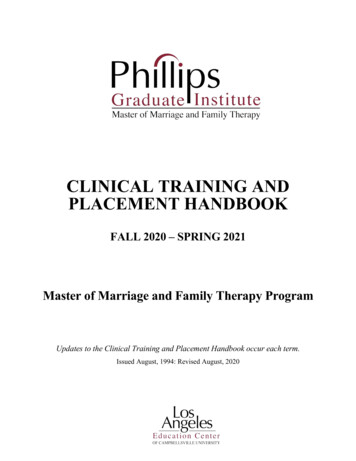
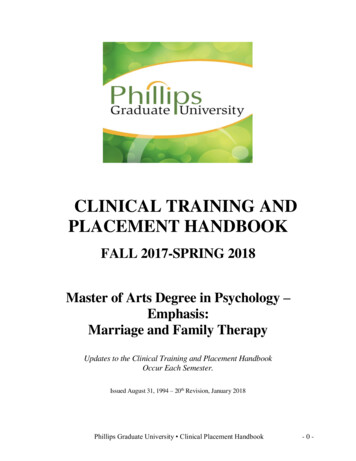

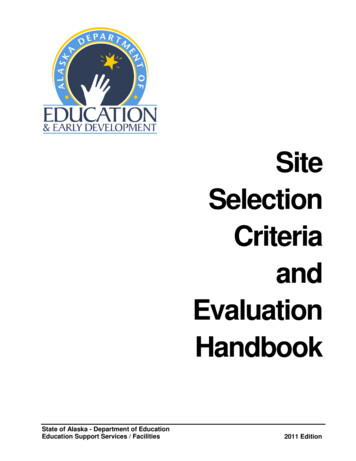
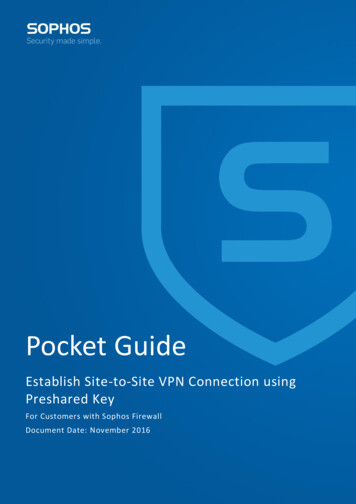
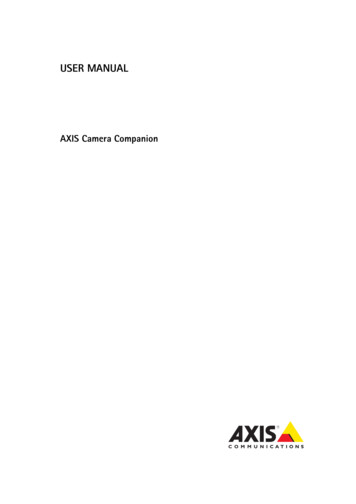
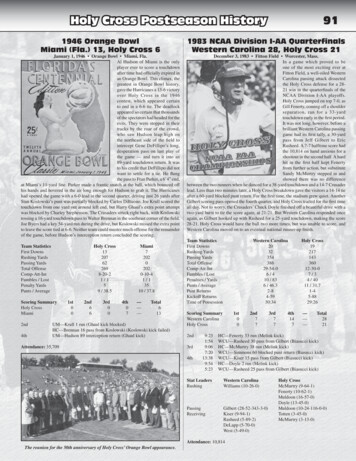

![[Insert Title Here] - NCWWI](/img/21/ncwwi-roles-and-photos-public-version-final.jpg)
